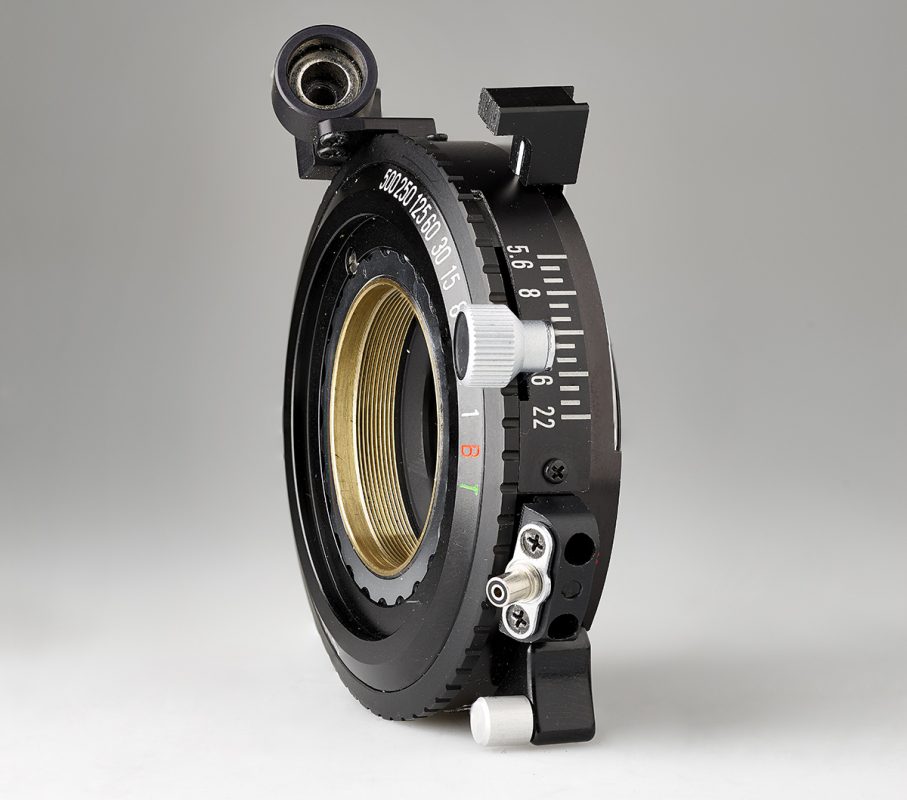
Since the dawn of Photography, we have made use of some sort of shutter that was part of, or that complimented the optics in the cameras early photographers used to image scenes onto the recording media of the time. The evolution of chemicals, substrates and processing methods evolved separately from the mechanical designs of what started with the camera obscura.
Electro-mechanical camera systems have for decades risen over the purely mechanical systems of the past and digital capture has largely replaced the analog capture of film, but even in the most capable technical cameras of today, basically the same shutter system of the last 100+ years has persisted.
Copal, compared to prior and rival Compur and Prontor shutters are more accurate than the older shutters but still spring motor driven.
The Copal shutter used today in modern Rodenstock HR optics has a maximum shutter speed of 1/500th (indicated) but given the spring driven nature of that system, many times that mechanism will only fire at around 1/400th of a second and shooting at 1/60th may deliver only 1/50th or even 1/70th as reported in metadata by the digital back. Given the precise nature of modern cameras, the shutter speed markings on the barrel of a Copal shutter can be viewed more as targets of shutter speed and not absolutes.

Thankfully, 14+ stops of dynamic range at capture has mitigated any negative effects of these small variances.
Even with lacking the exactness of 1/3rd stop (or even 1/10th stop) shutter speed control offered in modern camera systems, the Copal shutter has had a remarkably long life, but there are now several factors affecting its continued use.
Centrally mounted shutters of size 0 were designed and constructed approximately 50 years ago for lens components that weigh anywhere from a few grams to a few 100 grams and with a diameter of 15 mm to about 50 mm. New Rodenstock optics designed to resolve for 100 megapixels and beyond, tip the scales at up to 1300 grams and can have diameters up to 120 mm which correspondingly tug at the mounting threads, so proper handling is critical to the extended life of these lenses.
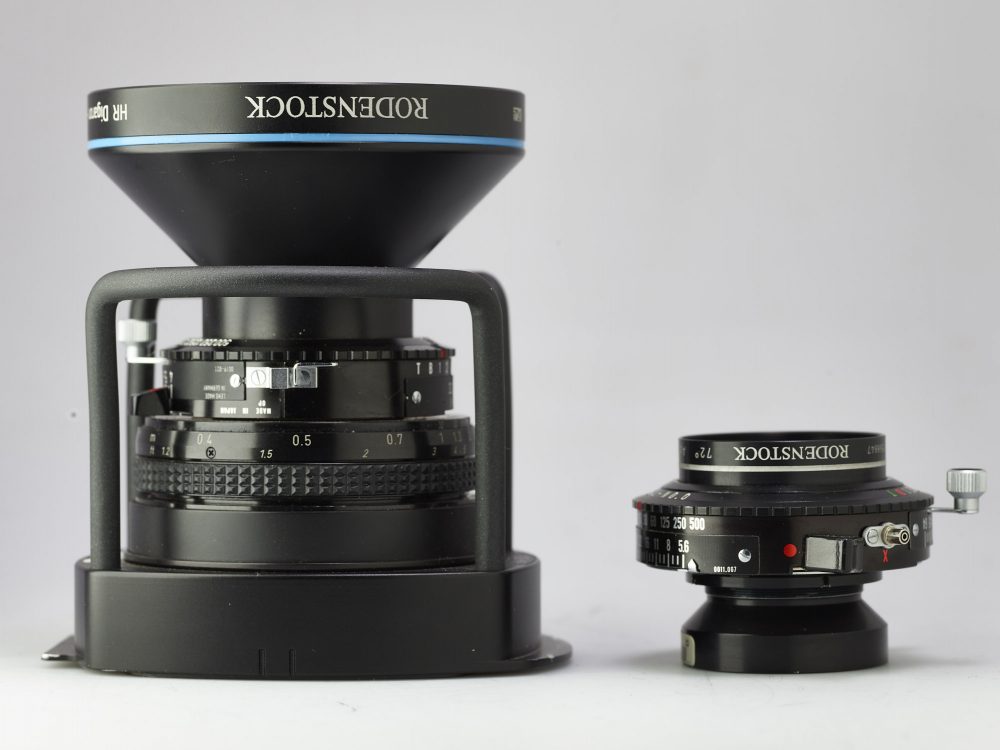
A misalignment between the front and rear threads, as well as the resulting angular position to each other, leads to de-centering or what opticians refer to as “shock” and or “run-out”. The required tolerance is less than 2/100ths of a millimeter, and when any external force like an impact or fall is applied to the shutter, displacing the front against the rear threaded connection by exceeding this tolerance, the overall performance of the lens becomes poor.
In this particular case a shutter repair is not possible as essentially the body of the shutter has been deformed beyond repair. The image from such an impact would result in partial blur in some areas and a gradient blur over the half of the image.
In a number of cases over the last years, our clients have been unaware of the event that caused the misalignment of their lenses, only finding out somewhere in the aftermath that a portion of their images were no longer as tack sharp as they used to be.
When it comes to shutter replacement, to have a completely new, factory installation of a Copal-0 shutter performed at Rodenstock in Germany costs in excess of $3000, plus the international shipping charges to get it there and back. While many issues with shutters can be repaired relatively quickly and domestically for 1/10th that price, ultimately if the shutter is skewed, there is no repair possible to that unit and the shutter will have to be exchanged.
Sourcing another used functioning shutter opens up a rabbit hole of possibilities of whether that shutter is also already skewed, which by visual inspection alone is impossible to determine, so be wary of anyone insisting they can cheaply swap the shutter on your $8k Rodenstock lens with the necessary precision to adequately resolve the perfection of those optics.
We are at the end of the age of the Copal shutter, with Copal announcing mid 2013 that they would no longer be producing new units. We have no clear indication when the last new Copal-0 shutter will be available for a new lens or to be installed as a repair, so it is of significant importance that we care for and extend the lives of existing Copal-0 shutters already installed in our lenses as the available supply of new shutters for new lenses and repairs is dwindling.
Proper Care of Copal 0 shutters:
• Do NOT cock shutter and then change shutter speeds. (Think of this like shifting gears in a car without using the clutch. You can change gears, but the resulting wear on the transmission will ultimately cause early failure.) The process should always be, set the shutter speed first, cock and then shoot.
• Do NOT leave the shutter cocked while carrying the lens. Lens should always travel without the spring tension of the shutter being cocked.
• Do NOT travel with the lens attached to the camera body. Unless you have a laser cut foam case the cradles specifically that lens and your technical camera as a single unit, always travel with the lens detached from the camera. There is a great torque potential of the camera tweaking the lens with any bump to the camera bag/case.
• DO close the shutter while storing
• DO periodically exercise the range of exposures on the barrel.
Compliments and Alternatives to using Copal shutters
Copal-0 Compliment – Electronic Shutter:
Electronic Shutter (ES) is available on Phase One IQ3-100, IQ3-100 Trichromatic, IQ3-100 Achromatic digital backs, allowing users to shoot purely electronically with limited need for interaction with the Copal-0 unit. Aperture and use of the Diaphragm Lever are the only needed engagements with the mechanical system. (Alternative to using the diaphragm lever is to use a lens cap.)
[vimeo 185077674 w=640&h=360]
I actually love the ES workflow and prefer it in my shooting to using the Copal shutter at all. While there are some caveats for use, I use ES everywhere I can, both for the ease of workflow but also in the knowingness that I’m extending the life of the Copal shutter by appropriately using ES.
Pros:
•Noise and Vibration Free, work 90% from in back of the camera.
•1/3rd stop control from 1 hour to 1/4000th of a second (no dreaded 2 second exposure)
•Remote, wireless activation while using Capture Pilot
•Remote, wired activation with BOB or Hahnel XF remotes or with wakeup cable
•Aperture Metadata available as manual entry on digital back.
•Effortless, quick multiple frames.
Cons:
• Rolling Shutter artifacts with moving subjects:
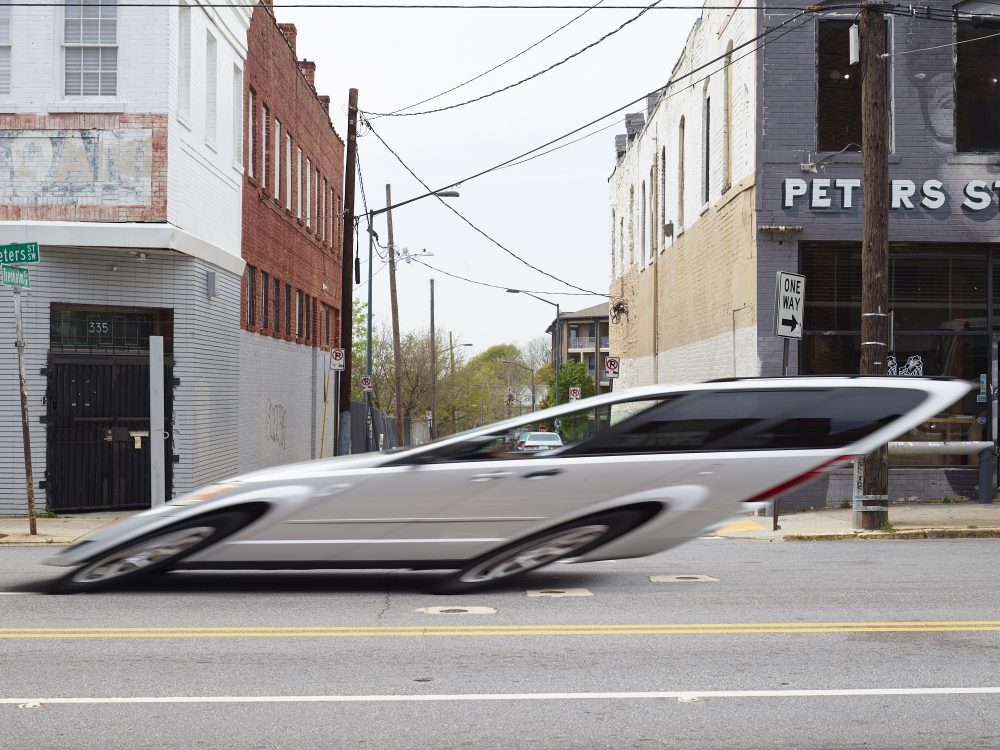
Think of a rolling shutter like a flatbed scanner, and 100% of your image isn’t being captured at exactly the same time. The pace of the rolling shutter is a little longer than one full second. Any objects of any size or speed moving through the frame will have a lean to them, as the top of the frame is being scanned before the bottom of the frame.
• Added step of capturing a dark frame reference:
All Phase One digital backs require the gathering of a Dark Frame Reference (term used interchangeably with ‘Black’ Frame Reference) to identify any sensor noise on the capture by capturing a 2nd exposure equal in length to the frame just captured to be used to subtract any sensor noise back out of the final image in Capture One. With Copal Shutter or 645 body exposures, this is done automatically at the conclusion of any given capture and normally, subsequent frames at the same shutter speed will not require a fresh reference file, as the original file will suit. With ES enabled on a technical camera, at the conclusion of the first exposure at any given shutter speed, the user will have to either securely place a lens cap on the lens, or close the shutter down via the diaphragm lever. Subsequent dark frame reference prompting can be mitigated by selecting to suppress it via a radio button on the ES interface.
• Slow Flash Sync:
Just like Focal Plane Shutters have a speed limitation to strobe syncing, there is a limitation of the rolling shutter as follows.
IIQ 16-bit 1.3 Seconds, ISO < 800
IIQ 16-bit 1.6 Seconds, ISO ≥ 800
IIQ-L (14-bit) .6 Seconds, ISO < 800
IIQ-L (14-bit) .8 Seconds, ISO ≥ 800
When successful flash sync is not possible, the flash sync port is disabled so you won’t see the strobe artifact if you try to shoot beyond these parameters. If you manually fire the strobe in even a 1 second exposure, you’ll get something like you’d expect from syncing faster than 1/125th on the focal plane shutter:
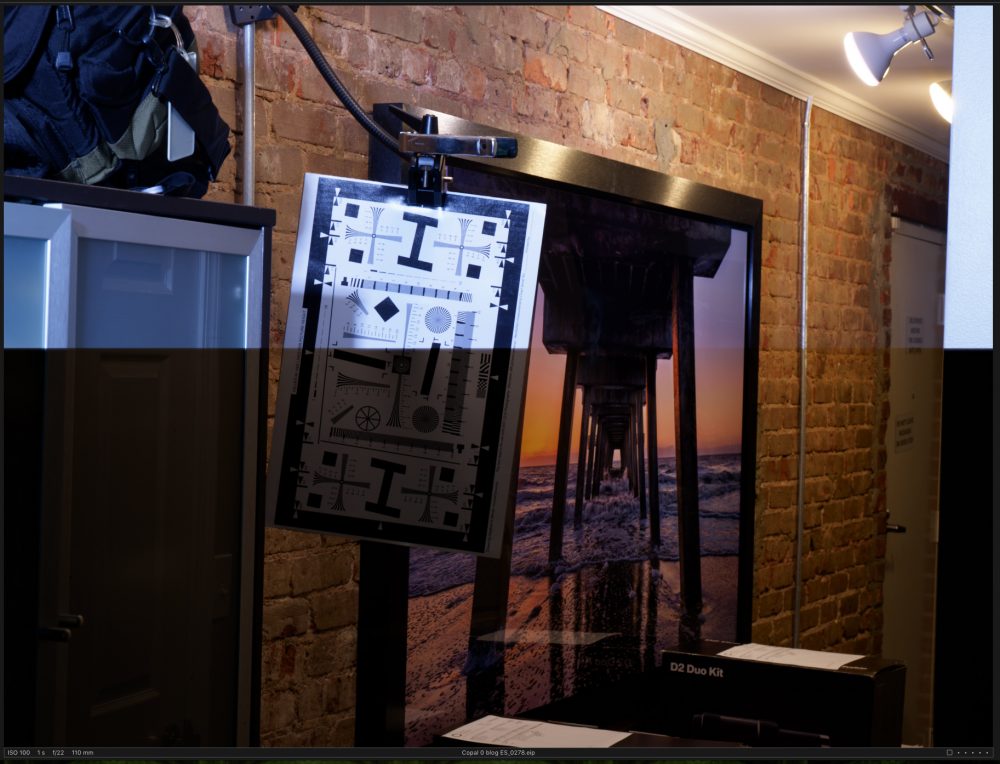
Copal-0 Alternative – Sinar Electronic Shutter (eShutter 250)
Not to be confused with the Phase One electronic shutter (ES), this is an electro-mechanical shutter powered and controlled by a external box. Shown here on the Sinar LanTec camera, the Sinar eShutter 250 can compliment not only Sinar cameras but also Alpa, Cambo WRS and Arca Swiss cameras with lenses mounted specifically for those systems.
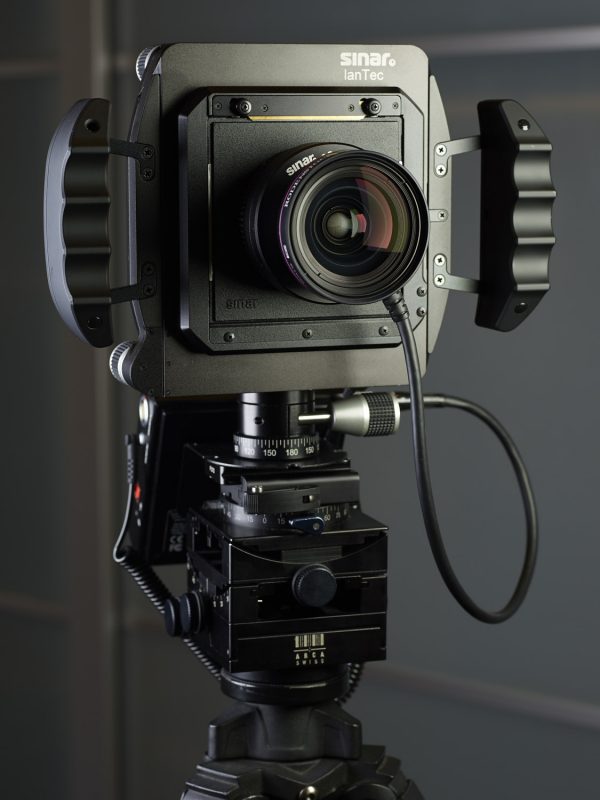
In its newest iteration, it is fully battery powered and the box mounts easily to your tripod so as to function as easily on location as in the studio.
A simple and intuitive multifunction button/wheel layout navigates you to not only shutter speed but aperture selections, fully removing any need of working physically on the front side of the camera.
Depending on the lens, expect to spend $1500-$1750 per lens to opt for the Sinar eShutter as a new option, the conversion of an existing Copal-0 to eShutter is $3332, which is only $132 more than a Copal-0 shutter replacement.
I had the opportunity to shoot the Sinar eShutter 250 mounted up to the Sinar LanTec for a few days and the eShutter, while not as simple as the purely electronic Phase ES, or purely mechanical Copal, it is a very nice system and with a little muscle memory could easily integrate into any photographers workflow.
Pros:
• Modern electro-mechanical shutter mechanism
• 1/10th / stop control for shutter speed
• Electronically controlled aperture with 1/6 f-stops
• Recessed lens-boards available, supporting all focal-lengths down to 23mm
• 7-blade iris diaphragm for circular aperture openings
• iPhone app to control shutter over existing wiFi network in studio
• 250,000 shutter release cycles
• Capable of 1.5 images per second
Cons:
• Added cost and complexity
• Fastest shutter speed limited to 1/250th
• Separate battery powered, electronic system needed to expose images (or even open the shutter to view through it)